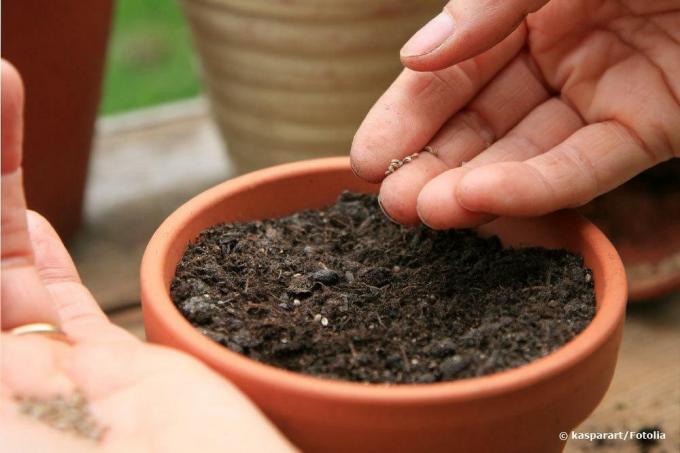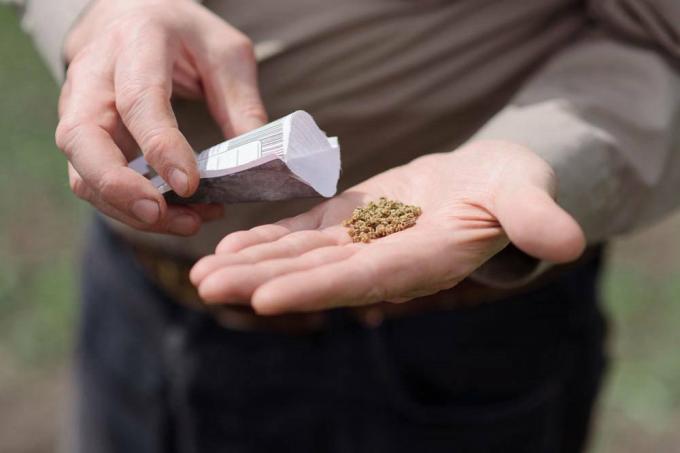
table of contents
- Stratify
- What is germ inhibition?
- Difference between cold and frost germs
- Stratifying cold germs
- Warm-cold stratification
- When are seeds sown?
Seeds are not always able to germinate directly, but require certain stimuli in order to germinate. So-called cold resp. Frost germs, for example, need a cold stimulus before they start to germinate. This cold stimulus can be simulated, namely with stratification. We explain to you what is behind the term “stratification” and how you can use this procedure.
Stratify
Stratification is understood to mean a process that interrupts the sprout inhibition of certain plants. The term “stratification” comes from the Latin word “stratum”, which means “ceiling” or “layer”. This designation is based on the original stratification procedure, because unlike today, the seeds were simply embedded in layers in the substrate. Nowadays, however, a different approach has become established for interrupting the germ inhibition. Stratification is mainly used in young plant operations and frost tree nurseries, but hobby gardeners also benefit from this process:
- The seeds emerge evenly
- thus higher harvest yield possible
- less poor quality plants
What is germ inhibition?
The sprout inhibition is, so to speak, an internal clock of the seeds, which protects them from germinating too early. A good example of this are different Woodswhose seeds ripen in late summer or autumn. If these germinated directly, they would have little chance of survival, as they would have to survive the winter and frost. To ensure that the seeds have the best possible chance of survival, the sprout inhibition kicks in and prevents them from germinating before winter. But not only woody plants are typical cold germs, because a large number of different plants belong to this group:
- Wild garlic
- Fragrant violets
- Cloudberry
- plum
- Bellflower
- Poppy
Difference between cold and frost germs
In the past, cold germs were also subordinated to different groups, namely cooling and frost germs. This was because some plants require significantly lower temperatures to germinate than others. Nowadays, however, the distinction between cool, cold and frost germs is no longer common, so that all plants are assigned to the group of cold germs. However, it may well be that cold germs are still called frost germs today.
Stratifying cold germs
The stratification of cold germs is very often used and at the same time has a high chance of success. The hobby gardener can also try stratification, because this process is relatively simple. The equipment required is also manageable, because all you need is a box, a fine-meshed grid and substrate. A sharp-edged screed sand or a sand-peat mixture is suitable as a substrate. Normal garden soil or even compost should not be used, as it usually contains many harmful seedlings and thus promotes mold. The best way to stratify the cold germs is as follows:
- Protect the box with a fine-meshed grid
- provides protection from mice and birds
- Fill the substrate into the box
- Put in the seeds
- Put the box outside
- as protected and shady location as possible
- The box must be exposed to the weather!
- about 2 ° C - 8 ° C
- frosty temperatures are not required
- keep evenly moist
The box now has to stay in place for a few weeks and you should check it at least once a week. When checking, it is also advisable to turn the entire mixture several times. Because this measure roughen the shell of the seeds, making them germinable faster. This is particularly worthwhile with hard-shelled seeds, as these usually take a little longer to germinate.
Note: Instead of placing the seeds in a box directly outside, other methods of stratification have proven effective. You can also store the seeds in a plastic bag filled with sand in the refrigerator or in the basement.
Warm-cold stratification
Another method of making seeds viable is warm-cold stratification. Basically, it works almost exactly like cold stratification, but with the difference that these are initially exposed to higher temperatures for around two to four weeks. Only after this warm period are the seeds exposed to the cold stimulus. The preceding heat accelerates the swelling of hard seed coats, so that the seeds can germinate more quickly. Plants with hard seed coats are among others
- Witch hazel
- Yew (taxus)
- some viburnum species
When are seeds sown?
The best time to sow the seeds is as soon as the first of them germinate. It is therefore advisable to check them on a weekly basis. As soon as you can see that the seeds are germinating, you can sow them all - if the time is right for sowing. For example, if the seed kernels are ready to germinate in January, you should wait a little longer before sowing and continue to store the seeds at -2 ° C to -4 ° C.
Note: When sowing, the substrate can be sieved off beforehand if necessary, but it is also possible that the sand is simply sown as well.


